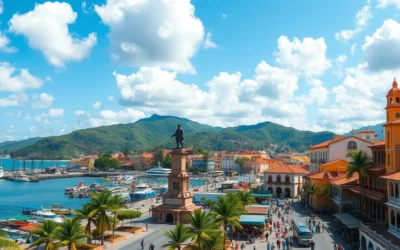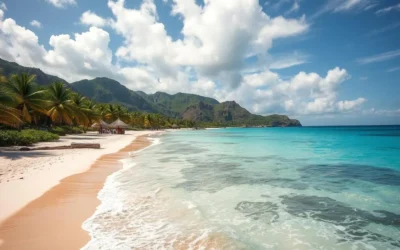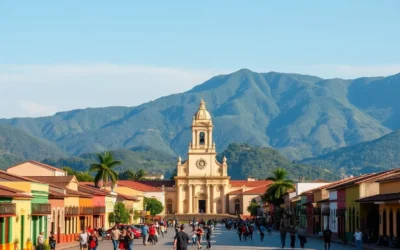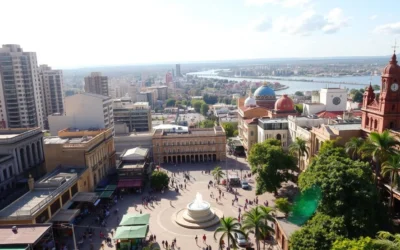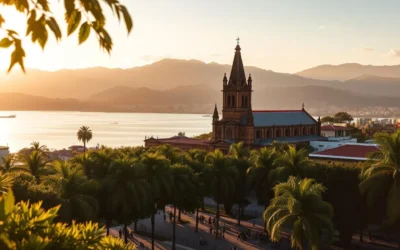✓ Accommodations✓ Flights✓ Rental Cars
Did you know that Valencia is Venezuela’s third-largest city and a major industrial hub with a rich cultural heritage? This vibrant city is often overlooked by international tourists, but it has a lot to offer.
As you plan your trip to Valencia, you’ll find a mix of colonial architecture, modern entertainment facilities, and natural attractions. From the historic center to the Aquarium of Valencia, there’s something for every type of traveler.
Explore the city’s diverse experiences, including history, nature, shopping, and local cuisine. With this guide, you’ll be able to navigate the city efficiently and make the most of your visit.
Discovering Valencia: Venezuela’s Industrial Powerhouse

Located in the heart of Venezuela, Valencia is a city that seamlessly blends history and modernity. As you explore this vibrant city, you’ll discover its rich history and industrial significance.
Brief History of Valencia
Valencia has a storied past, dating back to its founding in 1555. The city’s history is reflected in its architecture, cultural landmarks, and the resilience of its people.
Getting to Valencia
Valencia is conveniently located about 150 kilometers west of Caracas, making it easily accessible by various transportation methods. You can reach Valencia via:
- The Arturo Michelena International Airport, which serves domestic flights and some international connections.
- A comfortable 2-hour bus ride from Caracas on well-maintained highways.
- Several bus companies operating frequent services between Valencia and other major Venezuelan cities.
- Rental cars, with good road infrastructure connecting Valencia to other parts of the country.
- Taxis and ride-sharing services within the city.
- Local buses and mini-buses (“por puestos”) for an economical way to navigate the city.
As you plan your trip to Valencia, you’ll find that the city offers a range of options to suit your travel needs. Whether you’re interested in things Valencia has to offer, you’ll be well-connected.
Explore the Historic Center of Valencia
The heart of Valencia beats strongest in its historic center, where history and modernity blend. As you explore this vibrant area, you’ll be surrounded by impressive examples of colonial architecture, a testament to the city’s rich cultural heritage.
Colonial Architecture
Valencia’s historic center is characterized by its stunning colonial architecture, featuring buildings with a distinct style that reflects the city’s Spanish colonial past. The area is filled with historic structures that showcase the city’s architectural evolution.
Plaza Bolívar
At the heart of the historic center lies Plaza Bolívar, a grand square that serves as the city’s main gathering place. The plaza is dominated by a statue of Simón Bolívar and is surrounded by important buildings, including the Metropolitan Cathedral.
The plaza follows the traditional Spanish urban planning model, with well-maintained gardens, benches, and pathways. It’s a popular spot for locals and visitors alike, hosting regular cultural events and celebrations that bring the community together.
Visit the Cathedral of Valencia
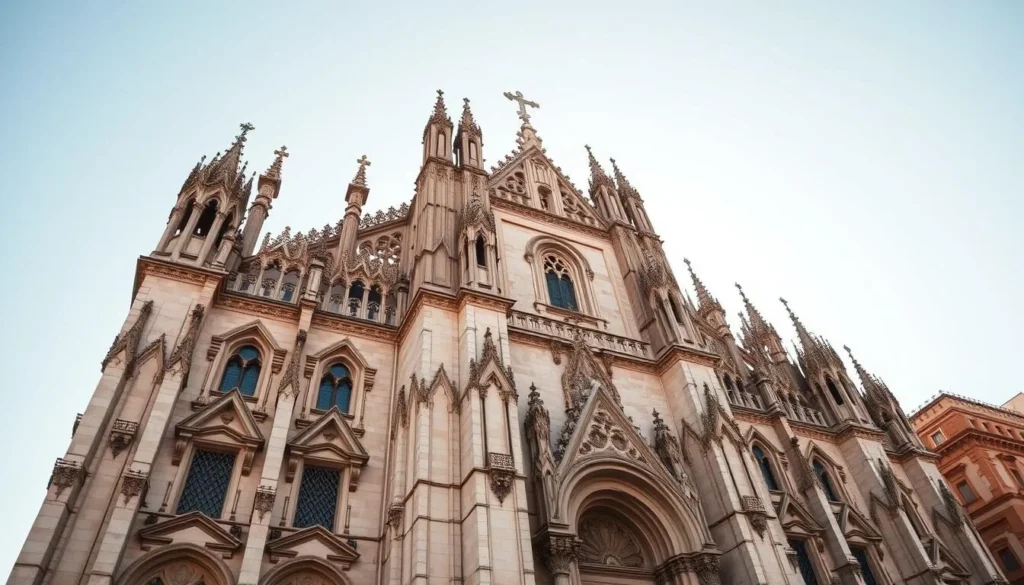
The Cathedral of Valencia is a must-visit destination in Venezuela, renowned for its stunning architecture and profound religious significance. As the seat of the Archdiocese of Valencia, it plays a central role in the region’s Catholic worship.
Architectural Highlights
The cathedral’s architecture is a blend of styles, reflecting the various periods of its construction and renovation. Its design elements and historical artifacts make it a fascinating visit for those interested in religious architecture.
Religious Significance
The Cathedral of Valencia is not just an architectural marvel but also a deeply significant religious site. It houses important religious artifacts and is a focal point for religious celebrations, including Holy Week and the feast day of Our Lady of Help. Some believe it contains relics of great religious importance, akin to the holy grail of religious treasures.
When you visit Valencia, make sure to stop by the Cathedral to experience its spiritual ambiance and historical richness.
Discover the Aquarium of Valencia
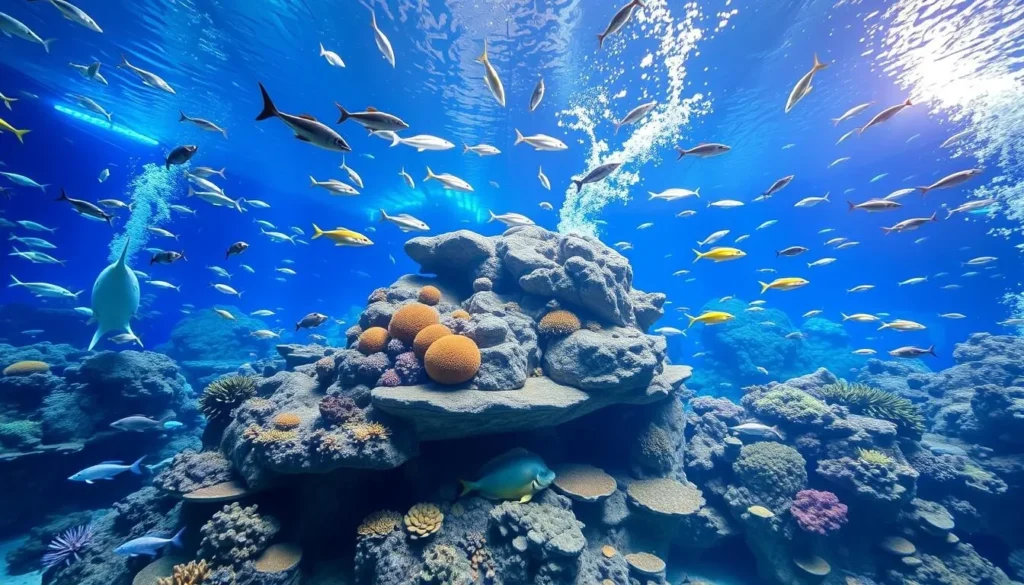
As one of the largest aquariums in the region, the Aquarium of Valencia is a great place to learn about marine life. You can explore a variety of marine life exhibits that showcase the rich biodiversity of our oceans.
Marine Life Exhibits
The Aquarium of Valencia features an impressive collection of marine species. You can see a wide range of fish, invertebrates, and other creatures in exhibits that replicate their natural habitats.
Educational Programs
The aquarium offers various educational programs designed to raise awareness about marine conservation and biodiversity. You can participate in guided tours, workshops, and interactive displays that explain concepts like ocean pollution and sustainable fishing practices.
Some of the educational programs include regular guided tours led by marine biology experts, special workshops for children and students, and interactive displays throughout the facility.
Explore Bioparque Carabobo
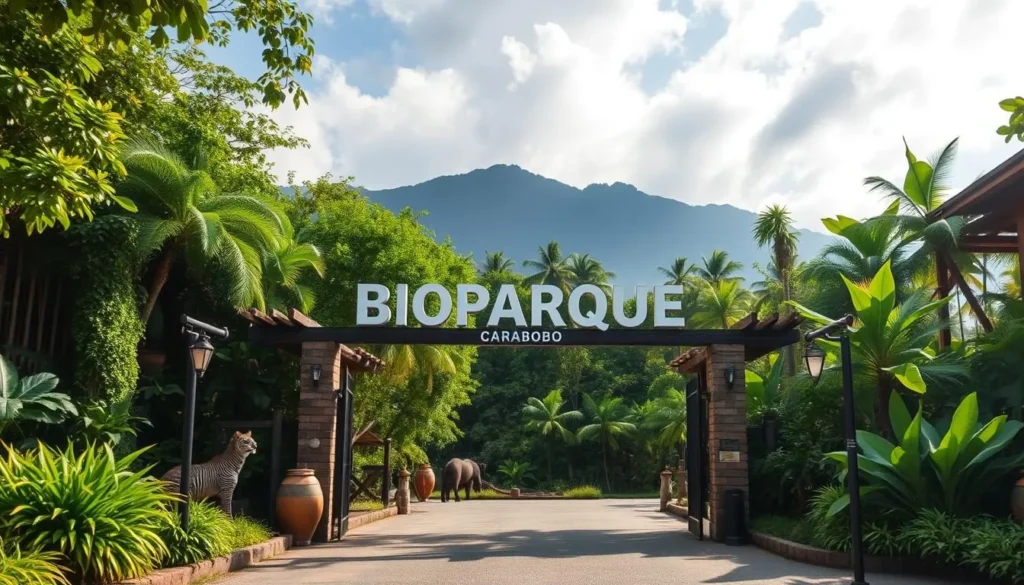
Located in Valencia, Venezuela, Bioparque Carabobo is a haven for wildlife enthusiasts and families alike. As a significant natural park, it offers a unique opportunity to explore African-inspired wildlife exhibits in a setting that mimics the natural habitats of the animals.
African-Inspired Wildlife Exhibits
The park is renowned for its diverse collection of wildlife, presented in exhibits that are designed to replicate the animals’ natural environments. Visitors can observe a wide range of species, getting up close and personal with the fascinating creatures.
Family-Friendly Activities
Bioparque Carabobo is designed to cater to visitors of all ages, offering numerous family-oriented activities. Some of the highlights include:
- A dedicated children’s area with a petting zoo where kids can safely interact with domesticated animals under supervision.
- Regular animal feeding sessions and keeper talks that provide entertaining and educational experiences.
- A miniature train ride that takes visitors around the park, offering a fun way to travel between exhibits.
- Play areas with nature-themed equipment for kids to enjoy while parents relax nearby.
- Special family packages that include guided tours, animal encounters, and meal options at reasonable prices.
- Educational scavenger hunts and activity sheets available for children, turning their visit into an interactive learning adventure.
When planning your trip to Valencia, consider adding Bioparque Carabobo to your itinerary as one of the top things Valencia has to offer. The park’s proximity to other natural attractions, such as the Albufera Natural reserve, makes it an ideal stop on your journey.
Visit the Museum of Art Valencia
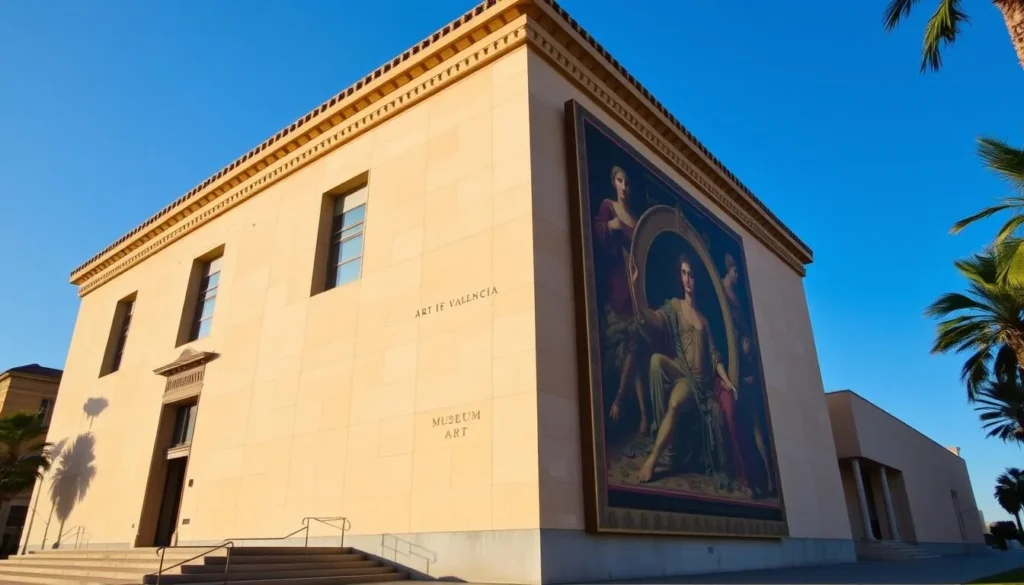
Discover the rich artistic heritage of Valencia at the Museum of Art Valencia, a premier cultural institution in the city. The museum is home to a diverse collection of Venezuelan art, showcasing the country’s vibrant artistic scene.
Permanent Collections
The Museum of Art Valencia boasts an impressive fine arts collection, featuring works by renowned Venezuelan artists. The permanent collection provides a comprehensive overview of the country’s artistic development.
Temporary Exhibitions
The museum maintains a dynamic program of temporary exhibitions, featuring works by contemporary Venezuelan artists and international artists. Some of the highlights include:
- Rotating exhibitions that showcase emerging talents and established figures in the national art scene.
- International exhibitions that bring world-class art to Valencia, fostering cultural exchange.
- Thematic exhibitions that explore specific artistic periods, techniques, or social issues.
- Collaborations with other cultural institutions to create traveling exhibitions.
- Interactive and multimedia exhibitions that incorporate new technologies.
By visiting the Museum of Art Valencia, you can experience the city’s rich cultural heritage and gain a deeper appreciation for Venezuelan fine arts.
Explore the Anthropological and Ethnological Museum
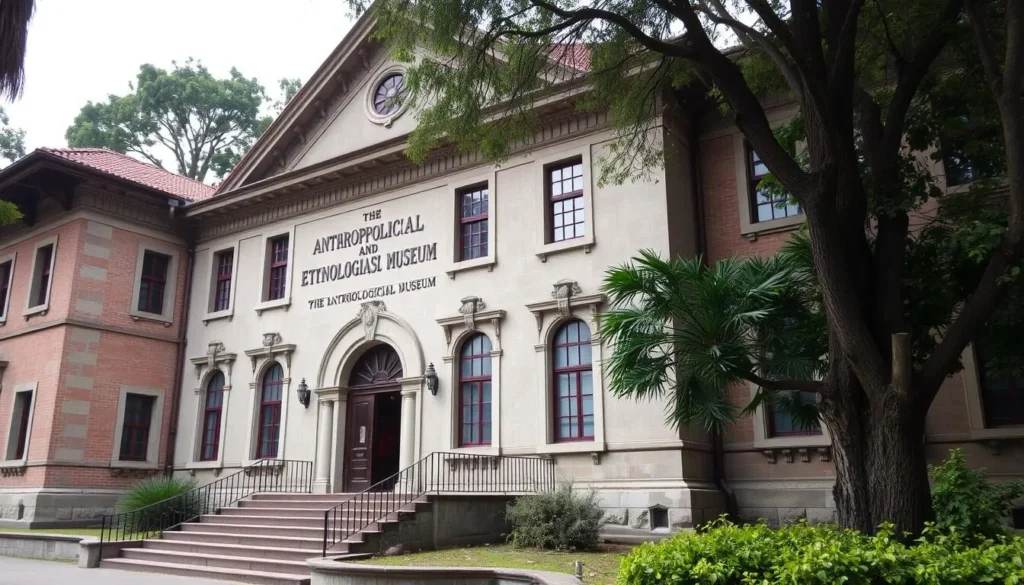
As you step into the Anthropological and Ethnological Museum, you’re about to uncover the rich tapestry of Venezuela’s history. This museum is a treasure trove of cultural heritage, featuring a vast collection of artifacts that tell the story of the country’s diverse ethnic heritage.
Indigenous Artifacts
The museum showcases an impressive array of indigenous artifacts, including traditional costumes, musical instruments, and festival masks. These exhibits illustrate the rich folklore and celebrations that characterize different regions of Venezuela.
Cultural Exhibits
Beyond indigenous artifacts, the museum features comprehensive cultural exhibits that explore Venezuela’s diverse ethnic heritage and historical development. Displays on colonial-era cultural exchanges examine how European, African, and indigenous traditions blended to create Venezuela’s unique cultural identity.
The African influence on Venezuelan culture is highlighted through exhibits on music, dance, religion, and culinary traditions brought by enslaved peoples. Interactive exhibits allow visitors to experience aspects of traditional lifestyles, from food preparation techniques to craft-making processes.
The museum regularly updates its cultural exhibits to reflect ongoing research and to incorporate contemporary expressions of traditional cultural forms, making it a national museum of great significance. With its diverse collections, including ceramics and other artifacts, it’s a ceramics museum and a hub for cultural learning.
Valencia, Venezuela: Best Things to Do – Top Picks for Nature Lovers
Valencia’s unique blend of natural beauty and outdoor recreation opportunities makes it a top choice for nature enthusiasts. The city’s favorable climate allows for year-round outdoor activities, catering to both active travelers and adventure seekers.
Parks and Green Spaces
Valencia is surrounded by natural attractions, including the Albufera Natural Park, which is a haven for birdwatchers and those looking to explore diverse ecosystems. The Henri Pittier National Park, accessible as a day trip, offers exceptional biodiversity with opportunities for wildlife viewing and nature photography.
Outdoor Activities
You can enjoy various outdoor activities in and around Valencia. Hiking enthusiasts can explore the trails of the nearby Coastal Mountain Range, which offers routes of varying difficulty with rewarding views. For a more relaxed experience, Valencia’s golf courses offer well-maintained greens with beautiful mountain backdrops.
Nature lovers can enjoy swimming, snorkeling, and paddleboarding at the beaches north of Valencia. Guided ecological tours are available to explore the region’s diverse ecosystems, from cloud forests to coastal mangroves, with expert naturalists. You can also explore the area around Valencia, discovering its natural beauty.
| Activity | Location | Description |
|---|---|---|
| Hiking | Coastal Mountain Range | Explore trails of varying difficulty with rewarding views |
| Swimming, Snorkeling, Paddleboarding | Beaches north of Valencia | Enjoy water sports in the Caribbean waters |
| Ecological Tours | Diverse ecosystems around Valencia | Guided tours with expert naturalists |

Shopping and Dining Experiences
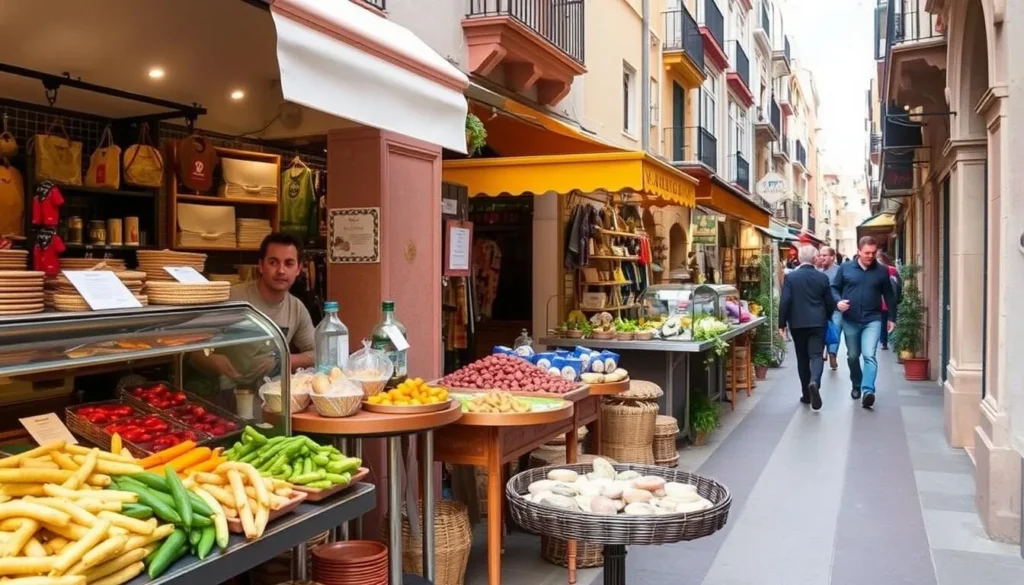
The city of Valencia is a treasure trove of shopping and dining experiences, from local markets to traditional eateries serving authentic Venezuelan cuisine. Visitors can explore the vibrant Central Market or Plaza del Mercado, where they can sample local delicacies and shop for unique souvenirs.
Local Markets
Valencia’s local markets offer a wide range of products, from fresh produce to handicrafts. You can find everything you need, and more, at these bustling marketplaces.
Traditional Cuisine
Must-try dishes include pabellón criollo and arepas. Seafood restaurants serve fresh catches, while street food vendors offer empanadas and tequeños. Don’t forget to try traditional Venezuelan desserts like quesillo and dulce de lechoza.
Day Trips from Valencia

You can easily take a day trip to several fascinating locations from Valencia. The city is surrounded by interesting places that offer a mix of history, culture, and natural beauty.
Nearby Natural Attractions
The area around Valencia is home to numerous natural attractions. For instance, you can visit Ocumare de la Costa, known for its cacao plantations where you can learn about chocolate production and sample artisanal Venezuelan chocolate.
Neighboring Cities Worth Visiting
Several neighboring cities are worth visiting. Puerto Cabello, Venezuela’s main port city, features colonial architecture and seafood restaurants. Maracay, known as the “Garden City,” boasts beautiful parks and access to Henri Pittier National Park. For those looking for beaches, Los Roques Archipelago National Park is a great option, although it requires a flight from Caracas.
Other towns like Bejuma and Montalbán offer a glimpse into traditional Venezuelan small-town life, with colonial-era churches and local festivals throughout the year.
Conclusion: Making the Most of Your Visit to Valencia
As you plan your trip to Valencia, Venezuela, you’ll discover a city that seamlessly blends cultural heritage with natural beauty. To make the most of your time, consider spending at least 3-4 days exploring its museums, parks, and historic sites. The dry season (December to April) is the best time to visit Valencia. By combining city explorations with nearby natural attractions, you’ll experience the authentic Venezuelan culture. With some basic Spanish and awareness of local conditions, you’ll have a rewarding trip.
—
The above is subject to change.
Check back often to TRAVEL.COM for the latest travel tips and deals.

